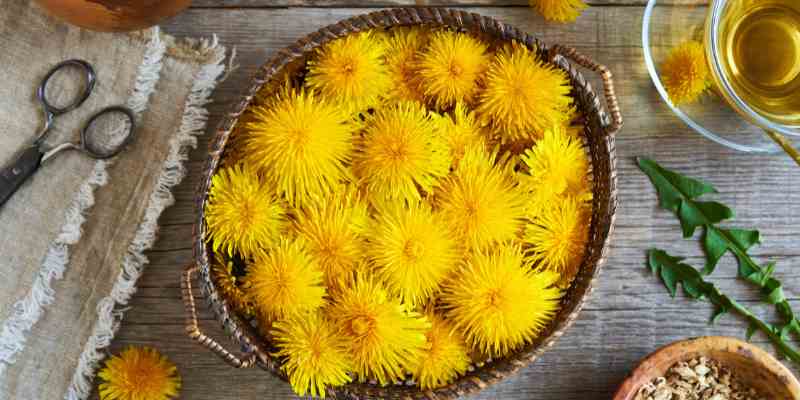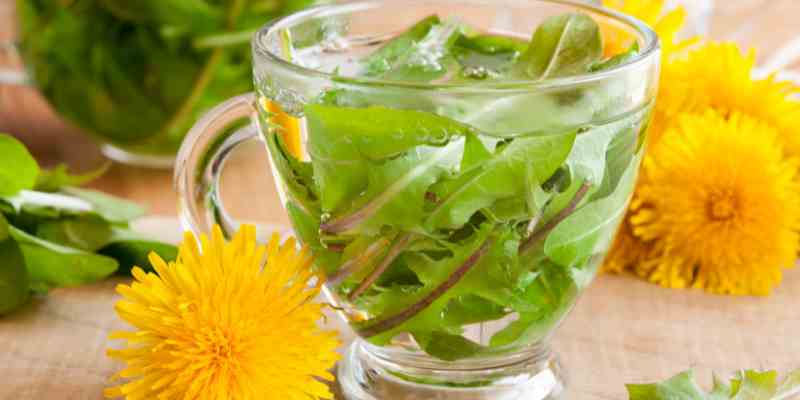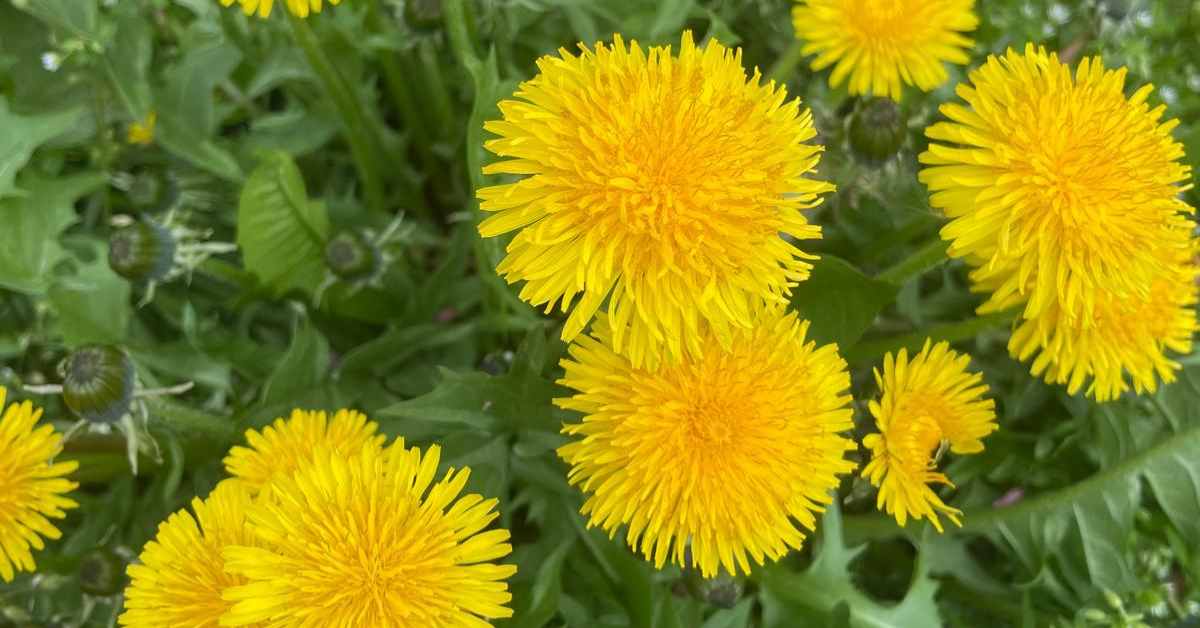You’ve seen them in the grass, scattered like little suns across the lawn. But dandelions aren’t just pretty (or pesky) spring visitors. They are one of nature’s most generous herbs. If you are curious about the benefits of tea from dandelion, you are not alone. More and more people are turning to this simple herbal drink to support their health and vitality.
I’ve found tea from dandelion to be a lovely addition to my spring and autumn self-care routines, especially when I feel my body could use a gentle reset. Today, let’s explore how this humble plant can support digestion, energy, skin health, and much more.
Note: This article is a timely introduction, as dandelion is now in its peak. A full, in-depth guide to dandelions and their many uses is coming soon to The Nature’s Magic Hub!
What is Tea from Dandelion?
This tea is a herbal infusion made from different parts of the dandelion plant (Taraxacum officinale). Traditionally, it is prepared from the leaves or roots, but many herbalists, including Maria Treben, have long recommended using the whole plant—leaves, stems, and even flowers.
Dandelions grow widely across meadows, roadsides, and grassy places throughout the country, lighting up landscapes with golden flowers from April to May. Preferring dry ground, they have earned many charming names over the centuries, including “Priest’s Crown,” “Blow-Ball,” and “Swine’s Snout.”
Gather the leaves before or during flowering, the stems during blooming, and the roots either in early spring or autumn. Each part carries its own unique healing powers.
Nutritional Benefits of Tea from Dandelion
Dandelion is rich in:
- Vitamins A, C, K, and small amounts of E and B vitamins
- Minerals such as potassium, calcium, iron, and magnesium
- Antioxidants like beta-carotene and polyphenols
- Fibre (especially inulin from the root)
These nutrients work together to support digestion, immunity, skin clarity, and overall energy. Especially after a long winter, tea from dandelion can offer a natural lift to your body’s systems.

How Tea from Dandelion Supports Your Body
Liver and Gallbladder Health
One of dandelion’s greatest strengths is its ability to support the liver and gallbladder. The bitter compounds found in the plant stimulate bile production, aiding digestion and detoxification. Herbalists have long recommended dandelion for liver inflammation, gallstones, jaundice, and sluggish digestion.
Maria Treben herself observed remarkable improvements in liver health by chewing five to ten fresh dandelion stems daily during the flowering season.
Digestive Aid and Bloating Relief
Tea from dandelion gently stimulates gastric juices, improves appetite, and acts as a mild laxative. It also has natural diuretic properties, helping to reduce water retention and bloating. If you often feel heavy or sluggish, a daily cup may offer welcome relief.
Blood Sugar Balance
Eating fresh dandelion stems has been a traditional remedy to help regulate blood sugar levels. Treben recommended up to ten stems a day for diabetics during the blooming season. Modern research suggests dandelion may indeed support insulin sensitivity and healthy glucose metabolism.
Skin Health and Blood Purification
By supporting the liver and kidneys, tea from dandelion indirectly contributes to clearer skin. Its traditional use as a blood purifier makes it helpful in conditions like eczema, acne, and gout. Some old herbal traditions even recommend using dandelion infusions externally to wash the face and eyes for a fresher, youthful appearance.
From my own childhood experience, I also remember that the white milky sap that comes out from the stems was used to treat small skin spots. If you wish to try this traditional method, it’s wise to first test a small amount on your skin to check for any allergic reaction.
Energy Boost and Metabolic Support
People who feel constantly tired and drained may benefit from dandelion’s revitalising effects. While chewing fresh stems offers a particularly swift boost, tea from the leaves, roots, and flowers also supports metabolism and helps restore natural energy levels. A 14-day course of fresh stems or tea can make a noticeable difference to your vitality.

How to Make Tea from Dandelion
Making tea from dandelion is wonderfully simple. You can use fresh or dried leaves, roasted roots, or fresh stems—each brings slightly different benefits.
Tea from Leaves and Stems
- Wash one tablespoon of fresh dandelion leaves and stems (remove the flower head).
- Steep in 150 ml of boiling water for 10–15 minutes.
- Strain and enjoy warm or cold. Add a little lemon or honey if you like.
Traditionally, the flower head is removed to focus on the stem’s bitter compounds, which support digestion more effectively. However, if you decide to include the flower head, it will add a slightly sweeter taste to your tea.
How to Make Tea from Dandelion Root
A traditional method, recommended by Maria Treben, involves soaking a heaped tablespoon of dried dandelion roots in cold water overnight, then bringing them to the boil and straining them the next morning. This preparation was traditionally sipped in small amounts before and after breakfast to support liver health and blood purification.
Fresh Stems
If you have access to clean, unsprayed dandelions, you can chew five to ten fresh stems daily during the blooming season, as Maria Treben recommended. Simply wash them, remove the flower head, and chew slowly.
Bonus: Dandelion Flower Syrup
The flowers of dandelion can also be transformed into a delicious syrup. Maria Treben’s traditional recipe creates a “honey” substitute that is gentle on the kidneys and rich in goodness. I will share the full syrup recipe in an upcoming article—so stay tuned!

FAQs About Tea from Dandelion
What does dandelion tea do for you?
Tea from dandelion supports liver health, improves digestion, boosts metabolism, purifies the blood, enhances skin clarity, and provides gentle diuretic benefits.
What does dandelion tea do to hormones?
While more research is needed, dandelion’s support for liver detoxification may help with hormone balance by aiding the body’s processing of excess hormones.
Is dandelion tea good for belly fat?
While not a magic solution, tea from dandelion may reduce water retention and improve digestion, helping you feel lighter and less bloated.
Can I pick dandelions from my yard for tea?
Yes, if your yard is pesticide-free and not exposed to heavy traffic or pollution. Always wash the plants thoroughly before use.
Is it safe to drink dandelion root tea every day?
Yes, generally—but start with one cup a day to observe how your body responds. Thanks to its diuretic action, it’s wise to let your system adjust.
Who should not drink dandelion tea?
Avoid tea from dandelion if you:
- Are allergic to plants in the daisy or ragweed family
- Are taking diuretics, blood thinners, or certain antibiotics
- Are pregnant or breastfeeding (due to insufficient safety data)
Always consult your doctor if you have existing health conditions.
Final Thoughts About Tea from Dandelion
Tea from dandelion is humble, affordable, and easy to prepare—yet its benefits are surprisingly far-reaching.
So next time you see that bright yellow flower nodding in the breeze, consider giving it a second glance. Brew a cup of tea from dandelion, take a breath, and let nature work its quiet magic.
Stay tuned to The Nature’s Magic Hub for more on dandelion’s many gifts — a full in-depth article is on the way!
If you enjoyed this article, feel free to share it with your friends and family to spread the knowledge!
Don’t forget to follow us on social media for more tips, updates, and insights into natural remedies and holistic wellness.
Join our community and stay connected to discover the magic of nature for a healthier, happier life!

